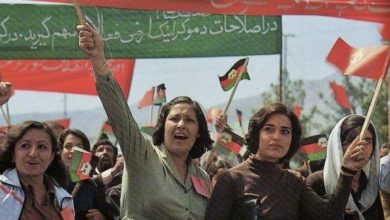As the U.S. occupation of Afghanistan nears the five-year mark, recent months have seen a dramatic upsurge in resistance to foreign troops. Resistance attacks reached 136 in August, an average of more than four per day. This was a 60 percent increase since July, according to the Center for Conflict and Peace Studies in Kabul.
The justified fury of Afghanistan’s people at the foreign occupiers increased after a U.S. military convoy crashed into
 |
Withdrawal of as many as 4,000 of the nearly 20,000 U.S. troops was supposed to come following the partial handover of command to the NATO-led International Security Assistance Force in July. ISAF, consisting of 18,500 troops from Britain, Canada and other European nations, now controls the southern, western and northern provinces. U.S. troops maintain command in the eastern part of the country.
Fierce attacks by Taliban and other forces led secretary of defense Donald Rumsfeld to cancel this troop cutback. Instead, calls for troop increases have come from U.S. and NATO commanders, as well as from a number of U.S. politicians. Despite criticizing the Iraq war, Democratic senator John Kerry and Connecticut senate candidate Ned Lamont have both called for increasing U.S. troop levels in Afghanistan—exposing the fallacy of labeling either as an “anti-war” politician.
Many European nations are unwilling to commit additional troops to what is increasingly seen as a losing battle. U.S. and NATO forces are facing higher casualties and greater demoralization.
Between May 1 and Aug. 12, an average of five U.S. and NATO soldiers were killed per week—twice the rate suffered during the invasion of Iraq in 2003. Since 2001, 339 U.S. troops and 139 NATO troops have been killed in Afghanistan. Hundreds, maybe thousands, more have been injured.
On Sept. 2, 14 British military personnel were killed in a spy plane crash, the highest day of British casualties since the occupation began. The exact cause of the crash is unclear, but various reports have speculated that missiles fired by resistance forces, pilot error or an onboard fire led to the crash.
U.S. and NATO forces have responded to the increased resistance activity with several months of massive air attacks, killing thousands. Just recently, a two-week bombing campaign in south Afghanistan destroyed buildings, agriculture and water wells. NATO commanders claimed more than 500 Afghanis were killed.
Despite months of brutal air bombings, the resistance to U.S. and NATO occupation continues and is strengthening.
According to a British soldier quoted by the Independent, “We are flattening places we have already flattened, but the attacks have kept coming. We have killed them by the dozens, but more keep coming, either locally or from across the border. We have used B1 bombers, Harriers, F-16s and Mirage 2000s. We have dropped 500lb, 1,000lb and even 2,000lb bombs. At one point, our Apaches [helicopter gunships] ran out of missiles—they have fired so many. Almost any movement on the ground gets ambushed.”
War and economic destruction
The occupation has also left Afghanistan’s economy and infrastructure in ruins. Millions of people are facing starvation. Around 70 percent of the population faces severe malnutrition and less than 25 percent has access to safe drinking water. Only 12 percent of the population has access to sanitation and 10 percent to electricity. There is one doctor per 7,066 Afghanis in the country, compared to one foreign soldier per 742 people.
Although poppy cultivation for opium production is illegal, many Afghanis have turned to this as the only way to earn money to feed their families. Poppy cultivation, which accounts for at least 35 percent of Afghanistan’s economy, is up 59 percent from last year. It has reached an all-time high, according to the United Nations.
The U.S. has spent hundreds of millions of dollars on poppy eradication in Afghanistan, forcing thousands of people to
 |
A report on Afghanistan from the European think tank The Senlis Council quotes a worker in Kandahar: “In the villages, they had their crops destroyed, there is no water, no jobs, nothing to do—isn’t it fair that they go and join the Taliban? Wouldn’t you do the same thing?”
This sentiment was echoed by former British Army Captain Leo Docherty, who was stationed in Afghanistan: “Having a big old fight is pointless and just making things worse. All those people whose homes have been destroyed and sons killed are going to turn against the British. It’s a pretty clear equation—if people are losing homes and poppy fields, they will go and fight. I certainly would.”
As in Iraq, the U.S. and other imperialist powers seek to remake Afghanistan in the neoliberal model by creating a client state willing to welcome massive foreign direct investment inside its borders. Consistent with this strategy, on Sept. 11, Afghanistan’s puppet president Hamid Karzai presided over the opening of the first Coca-Cola bottling plant in Kabul. Karzai, a former consultant to the oil giant Unocal and CIA asset, praised the plant’s owner—one of Afghanistan’s wealthiest men, now living in Dubai.
Coca-Cola is known all over the world for its fierce anti-union policies, including murders of union organizers in Colombia. Upon opening the plant, Coca-Cola called Afghanistan “the missing link” in the company’s global business strategy.
But today, Afghanistan looks more like a weak link in the chain of imperialist domination.





